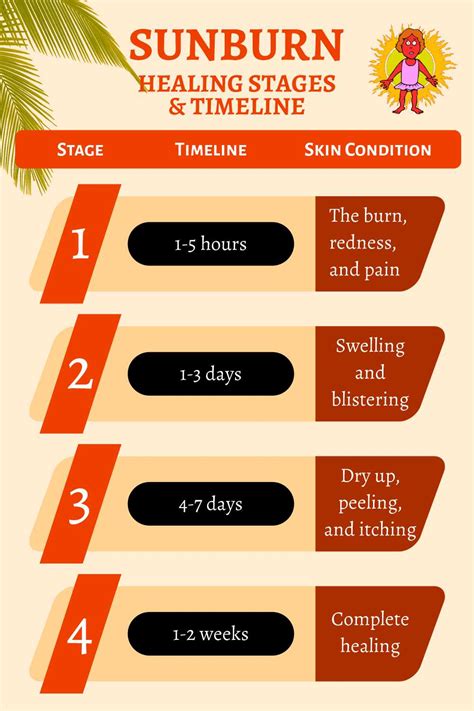How Long Does It Take For Sunburn To Heal?
Sunburn, that painful reminder of a day spent basking in the sun, is a common summertime ailment. But how long does it actually take to heal? The answer, unfortunately, isn't a simple one, as healing time depends on several factors. This comprehensive guide will explore the sunburn healing process, offering tips for faster recovery and prevention.
Understanding the Sunburn Healing Process
Sunburn is essentially a first-degree burn caused by overexposure to ultraviolet (UV) radiation from the sun. Your skin's reaction is inflammation, leading to redness, pain, and sometimes blistering. The healing process generally involves these stages:
Stage 1: The Initial Reaction (0-24 Hours)
Immediately after sun exposure, you might not notice anything. However, within a few hours, redness and mild tenderness will likely appear. This is your skin's inflammatory response kicking in.
Stage 2: Pain and Swelling (24-72 Hours)
As the sunburn worsens, you'll experience more intense pain, swelling, and possibly blistering. This is the peak of the inflammatory response. The skin may feel hot to the touch.
Stage 3: Peeling and Healing (3-14 Days)
After a few days, the pain and swelling usually subside. Your skin may start peeling, a sign that the damaged skin cells are being shed and replaced with new, healthy ones. The time it takes for peeling to complete, and for the sunburn to fully heal, varies.
Factors Affecting Sunburn Healing Time
Several factors influence how quickly your sunburn heals:
- Severity of the Burn: A mild sunburn will heal much faster than a severe one with deep blisters.
- Skin Type: People with fair skin tend to burn more easily and may take longer to heal.
- Age: Older skin often heals more slowly.
- Aftercare: Proper aftercare significantly impacts healing time. This includes keeping the skin hydrated, avoiding further sun exposure, and applying soothing lotions.
- Underlying Health Conditions: Certain medical conditions can affect the healing process.
How to Speed Up Sunburn Healing
While you can't magically make a sunburn disappear overnight, you can take steps to promote faster healing and alleviate discomfort:
- Cool Compresses: Applying cool, damp cloths to the affected area can reduce inflammation and pain.
- Hydration: Drink plenty of water to help your body repair damaged skin cells.
- Aloe Vera: Applying aloe vera gel can soothe the burn and promote healing. Avoid aloe vera products containing alcohol or fragrances.
- Pain Relievers: Over-the-counter pain relievers like ibuprofen can help reduce pain and inflammation.
- Avoid Hot Showers: Hot water can further irritate the skin. Opt for lukewarm showers instead.
- Loose Clothing: Wear loose, breathable clothing to avoid friction on the affected area.
- Avoid Further Sun Exposure: Protect your skin from further damage by staying out of the sun or using high SPF sunscreen.
When to See a Doctor
Most sunburns heal without complications. However, you should see a doctor if you experience:
- Severe pain or blisters: Especially if the blisters are large or cover a significant area.
- Fever or chills: These could indicate a more serious infection.
- Signs of infection: Pus, increased pain, or redness spreading beyond the initial burn area.
Preventing Sunburn: The Best Defense
The best way to deal with sunburn is to prevent it in the first place. Here are some essential tips:
- Wear Sunscreen: Apply a broad-spectrum sunscreen with an SPF of 30 or higher at least 15-30 minutes before sun exposure. Reapply every two hours, or more frequently if swimming or sweating.
- Seek Shade: Limit sun exposure during peak hours (10 a.m. to 4 p.m.).
- Protective Clothing: Wear protective clothing, such as a wide-brimmed hat, sunglasses, and long sleeves.
By understanding the sunburn healing process and taking preventive measures, you can enjoy the sun safely and minimize the risk of painful and prolonged recovery. Remember, consistent sun protection is key to healthy skin.
